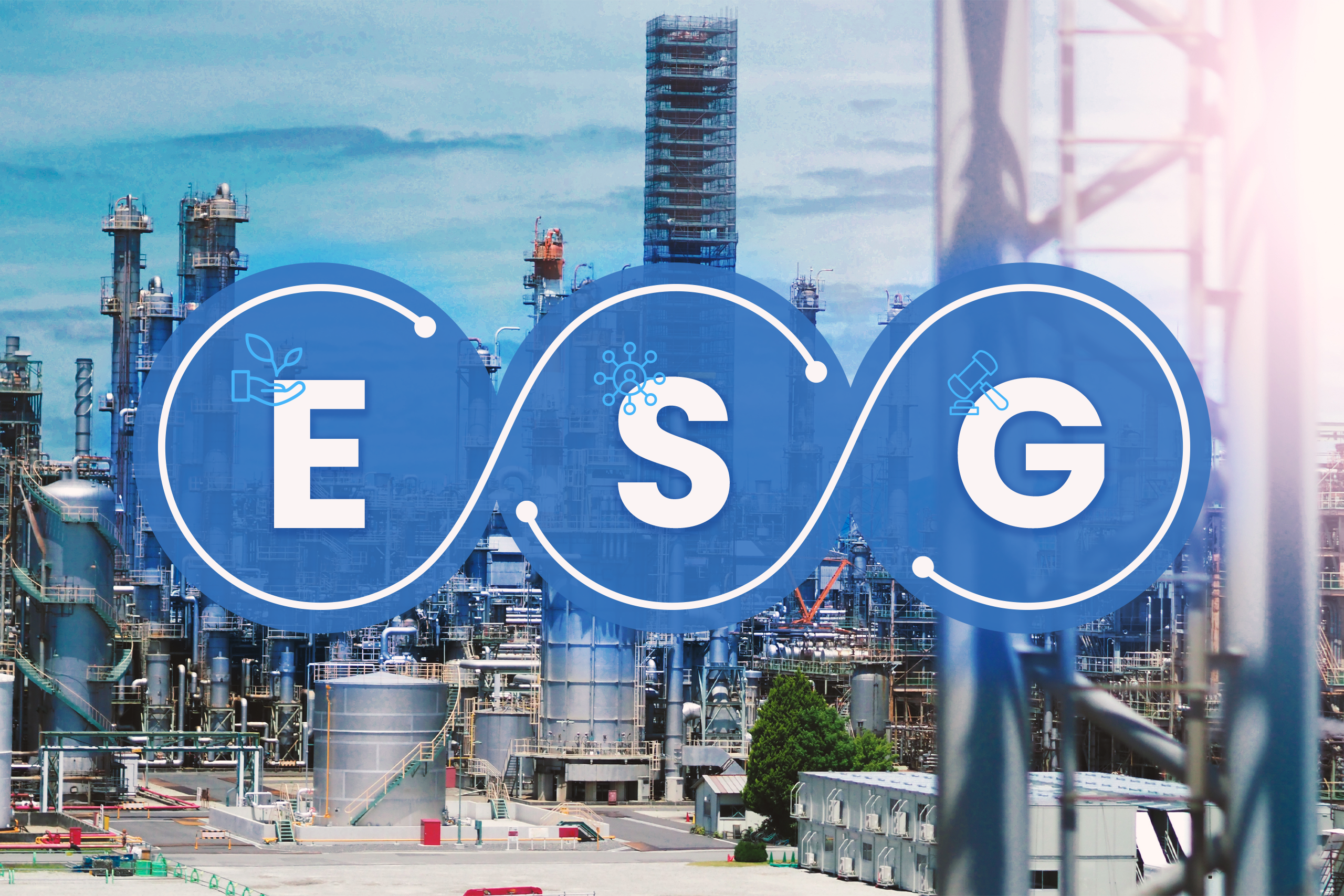ESG (Environmental – Social – Governance) concepts have been gaining much attention in recent years. In collaboration with major global goals, such as the Paris Agreement and the SDGs, the concept focuses on sustainable growth, social responsibility, and transparent corporate governance.
Turning these practices to the industrial ecosystem, it is possible to identify several challenges that obstruct the commitment to a net-zero operation, such as the extensive emission of greenhouse gases, asset failure, and non-optimal energy consumption due to operational inefficiencies.
The emergence of digital transformation and digital technologies has opened up new opportunities for achieving optimal operational efficiency and meeting ESG guidelines. Companies now have the opportunity to leverage these advancements in order to reduce harmful activities and achieve their decarbonization goals.
Industrial digitalization has proven to be an effective strategy in mitigating various challenges and facilitating the growth of businesses. By investing in digital transformation, companies can not only enhance their growth prospects but also make significant progress in the ESG pillar, aligning with sustainable practices and environmental stewardship.
Access and understand how Digital Transformation is helping industries to achieve decarbonization
What are ESG concepts?
ESG concepts first appeared in mid-2005. However, long before that, there were already movements aiming to deal with climate emergencies, such as the Kyoto Protocol, which was signed in 1997 and had as its main agenda the recognition by large industries of the existence of global warming and the need for measures to contain greenhouse gases emission to be taken.

By breaking down each of the axes, we can deeply understand some of the core purposes of ESG
- Environmental: sustainable practices, such as reducing emissions of pollutants, adopting renewable energy, and securing biodiversity;
- Social: socially responsible practices, such as employee safety and health, support for diversity and local communities, and more recently data privacy protection;
- Governance: efficient management of the company through anti-corruption policies, transparency, and compliance with laws and regulations.
ESG and Asset Integrity Management
Asset integrity management can be closely related to ESG (Environmental, Social, and Governance) considerations. Here’s how they are connected:
Environmental Impact:
Asset integrity management involves ensuring the safe and reliable operation of physical assets such as pipelines, equipment, and infrastructure. By implementing digital technologies like sensors, data analytics, and predictive maintenance, companies can monitor asset performance more effectively. This can lead to proactive maintenance, reducing the risk of asset failures or leaks that could harm the environment. By minimizing environmental incidents and optimizing asset performance, companies can contribute to their ESG goals.
Safety and Social Impact:
Asset integrity management focuses on maintaining the safety and integrity of assets to protect workers, communities, and stakeholders. Digital transformation enables real-time monitoring, early detection of anomalies, and improved safety practices. This can help prevent accidents, reduce occupational hazards, and enhance worker safety. By prioritizing safety and social well-being, companies can align with ESG objectives providing safer occupational health, employee welfare, and community engagement.
Governance and Compliance:
Effective asset integrity management also requires robust governance practices, including adherence to regulatory standards and compliance requirements. Digital transformation can enable better documentation, tracking, and reporting of asset integrity-related activities. This comes as support for transparency, accountability, and compliance with regulations. By adopting digital tools, companies can strengthen their governance practices, demonstrate their commitment to regulatory compliance, and align with ESG goals related to corporate governance and risk management.
In summary, integrating digital technologies into asset integrity management can positively contribute to the 3 axes of ESG, providing improved environmental impact, safety, and social welfare. This comes as a demonstration of Industrial commitment to sustainable practices and responsible operations.
Learn how Vidya is helping industries drive digital Asset Integrity Management to enhance ESG. Fill Out the forms!
Main challenges of the industry in the ESG axis
One of the major challenges for industries worldwide is the excessive emission of pollutant gases into the atmosphere, increasing the effects of global warming. Besides this, there are also impacts related to the operation and its impacts on the local fauna, flora, and biodiversity, as also the unregulated and uncontrolled use of raw materials and natural resources.
In recent years, for example, CO2 emissions from energy combustion and industrial processes have been increasing significantly. According to the International Energy Agency (IEA), about 2.04 gigatons more carbon dioxide was released into the atmosphere in 2021 than in 2020, reaching a total value of 36.3 gigatons, the highest since 1900.
Not only that, but the energy transition to a net-zero scenario is also concerning, as it lags behind expectations in the coming years. According to the IEA, even with the advances in renewable energy production by 2026, the increase in production capacity is still expected to be 1459.3 gigawatts behind what is needed to eliminate carbon emissions.
On the social side, within these same industries, there are constant risks ta could lead to accidents involving workers caused by asset failure. Even with several occupational safety regulatory standards, these accidents are still likely to happen without optimal asset integrity management.
Digitization as an answer to ESG needs in the industry
Digitization as an answer to environmental, social, and governance problems in industries has strengthened mainly since the Fourth Industrial Revolution (or Industry 4.0). Several technologies such as Artificial Intelligence, Machine Learning, Internet of Things, started to provide new opportunities for the efficiency of operations based on data-driven insights.
Understand how Digital Transformation can support industries’ Operate and Maintain phase
In this context, the industry’s digital transformation maturity is also a direct player to mitigate the problems regarding ESG.
Cutting-edge technologies started to emerge, and one of the main benefits they brought in is the possibility of real-time monitoring of key processes.
With enhanced monitoring, comes the possibility of planning more assertive actions as well as understanding exactly the points for improvement within the plant and prioritizing them in accordance. Meanwhile, by digitizing the process, industries are able to reduce the number of workers in hazardous areas.
Want to know more about how digitalization helps in the industry’s decarbonization and in its sustainable growth? Click here and access our whitepaper about the topic or download our ebook using the form below!



